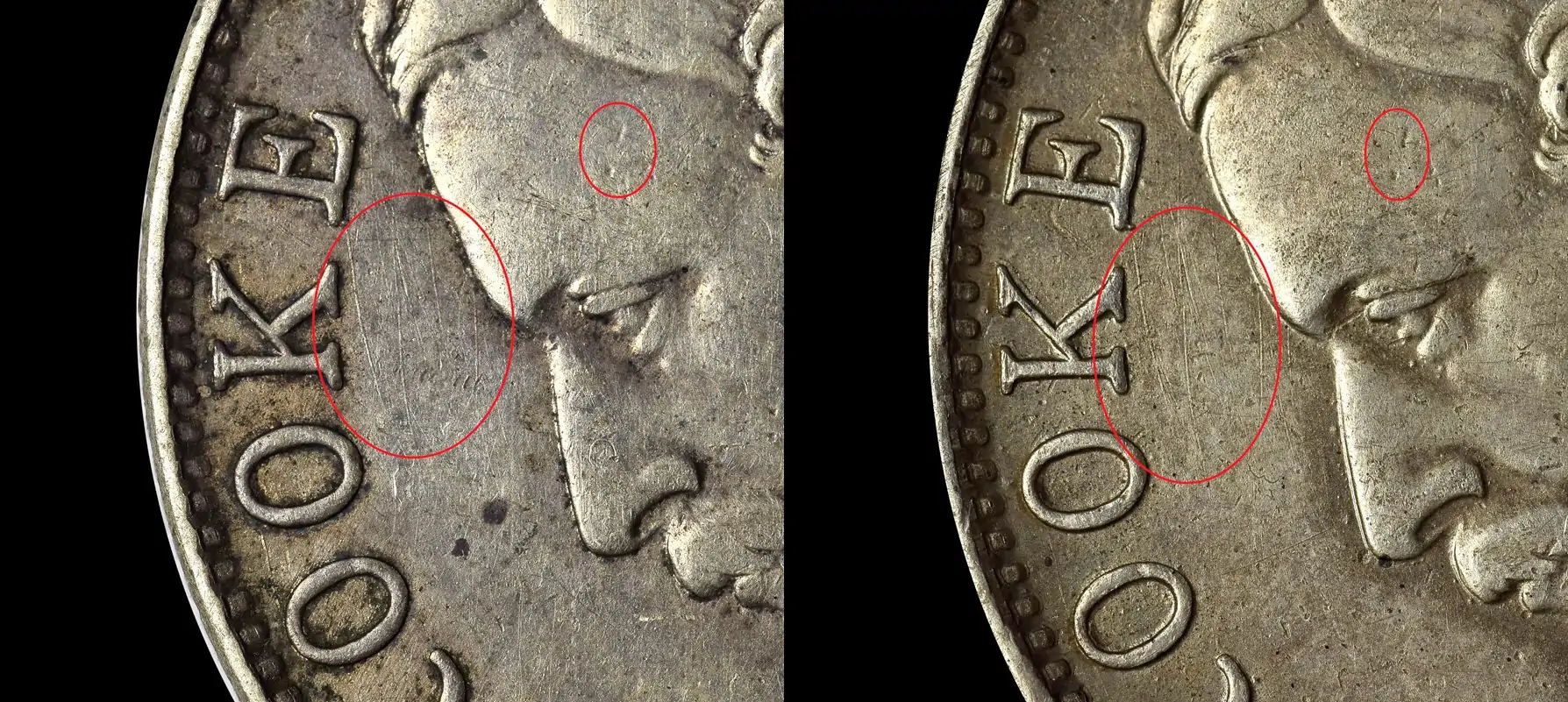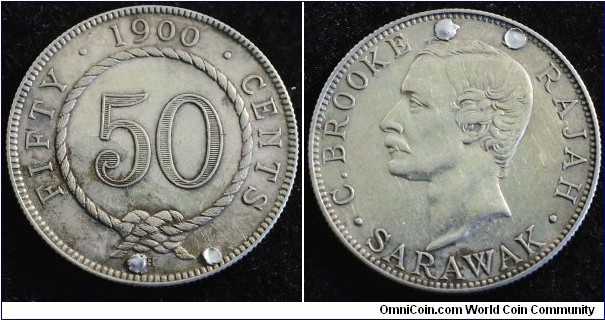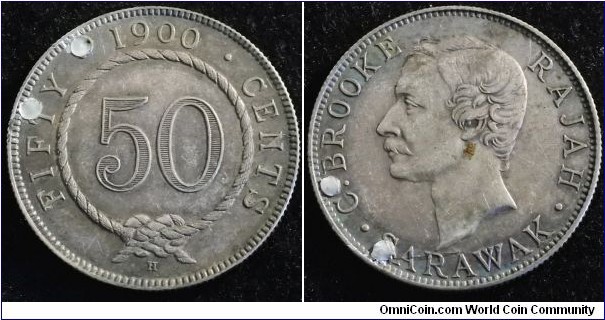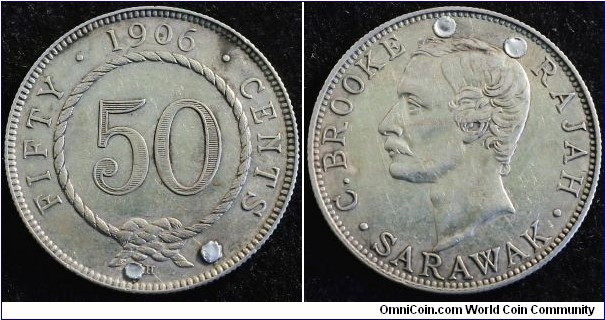NGC -
These coins have similar imperfections and too much silver.Sarawak is now a state in the country of Malaysia. However, in the past, the area had been under the rule of a British sailor named James Brooke, who helped the head of the Brunei Sultanate, Sultan Omar Ali Saifuddin II, quell an uprising in 1839. To reward Brooke for his success in quelling the revolt, the Sultan granted him the governorship of Sarawak.
Brooke and his family eventually became known as the "White Rajahs" of Sarawak. His nephew, Charles Anthoni Brooke, succeeded his uncle James in 1868. Charles is featured on a pair of Sarawak 50 Cent Pieces that were recently submitted to NGC for authentication and grading. Unfortunately for the submitter, both were counterfeit.
 Counterfeit 1900H Sarawak 50 Cents
Counterfeit 1900H Sarawak 50 Cents Counterfeit 1906H Sarawak 50 Cents
Counterfeit 1906H Sarawak 50 CentsAs you can see from the photos above, both coins have a similar look and the same level of "wear." In reality, this wear is false, as the coins were likely created using a transfer-die method with an AU quality coin as the "host coin." What is interesting about these two fakes is that they were struck using the same obverse die, and the reverse die was created from the same genuine host, but with the final digit in the date altered.
 Close-ups of counterfeit 1900H (left) and 1906H (right) Sarawak 50 Cent pieces
Close-ups of counterfeit 1900H (left) and 1906H (right) Sarawak 50 Cent piecesIn the photos above, the large circle highlights identical die tooling lines that can be seen on both pieces. These are not something that would be the same on two coins from two different dates. Additionally, there is a pair of repeating depressions in the forehead. These were likely a bag mark of some sort on the genuine example that was transferred to the counterfeit die and, therefore, every coin struck from that die.
These forgeries become even more interesting on the reverse, however.
 Close-ups of the date areas of the 1900H and 1906H Sarawak 50C pieces
Close-ups of the date areas of the 1900H and 1906H Sarawak 50C piecesThe photos above are once again marked with red circles highlighting areas of interest. There is a mark of some sort on the first "0" on both dates, as well as on the period to the left of the dates. Closer examination reveals that they are the same depressions transferred from the host coin. One would not expect to see the same exact circulation marks in the same spots on two separate coins. Therefore, it must be inferred that these were on the dies themselves.
As NGC does with many high-quality counterfeits, these coins were examined using our state-of-the-art X-ray fluorescent (XRF) metallic analyzer. As it turns out, both seem to have been struck in sterling silver, which is 12.5 percentage points more pure than the .800 silver in which the originals were coined at the Heaton Mint in England.
The weak details, repeating depressions, tool marks, and the fact that they were struck in the wrong composition prove these coins are both fake. NGC graders are constantly tested with counterfeits such as these pieces.
Read More: Counterfeit Detection Series Check out Sarawak 50 Cents on ebay
Check out Sarawak 50 Cents on ebay.



























